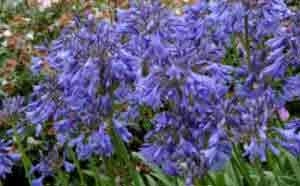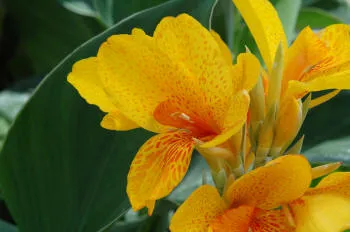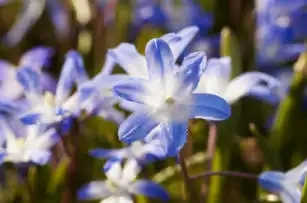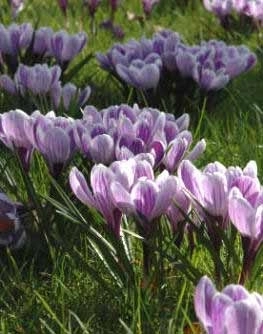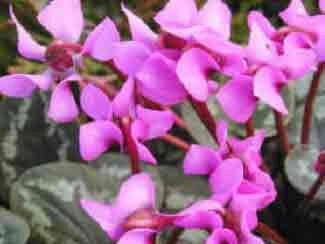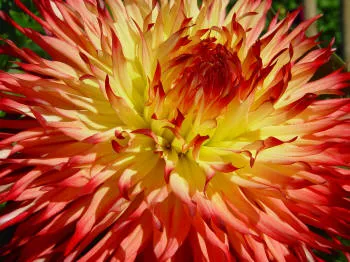Successful bulb growing
Prepare everything thoroughly and your expectations can be high for a beautiful display next spring. A good start is half the battle. Follow these golden rules, which are the key to success.
Bulbs are often simply bought and planted without too much though as to what is best for them. Whilst the bulb is a storage house of energy, there is still much to be done to ensure that you have a good crop of flower bulbs, and that you do not deplete that energy store which is so important for long live of your bulbs.
Aftercare such as feeding and watering often makes the difference between a good crop of flowers and blind bulbs.
Golden rules, advice and information
Rule 1: Order Your Bulbs in time
Choose your bulbs to suit the local situation and climatic conditions of your garden. Order them in time to be sure they are not sold out. Early November is about the latest for most nurseries and by then you are already too late for bulbs that need to be planted early, like snowdrops. Moreover, without fault of the nursery, sometimes things go wrong and the supply might be less than expected. In cases like this, the ‘first come, first served’ principle will count. I always try to make a list after receiving the first autumn catalogues and I have never been disappointed.
Rule 2: The right soil structure for Bulbs
Make sure that the soil in which the bulbs will be planted is well drained. Most bulbs do not like wet conditions - with a few exceptions, such as Fritillaria meleagris, Allium ursinum, Allium triquetrum and Leucojum aestivum. Bulbs do not grow long roots, so the soil should be able to hold the moisture well. On sandy soil this is more of a problem than on peat and clay soils, but you can always improve the soil by adding compost.
Fritilaria
Leocojum
Rule 3: Temporary storage of Bulbs
Unwrap the bulbs on arrival. If immediate planting is not possible, at least open the bags for good air-circulation and store them in a cool, dark and dry spot. ('Cool' being between 17° and 20° C.) Some bulbs dry out quite quickly, such as Allium ursinum, Anemone, Eranthis hyemalis, Erythronium, Fritillaria meleagris, Galanthus, Leucojum vernum and Lilium,. They will need to be protected untill planting. Put them in a container with sand or peat dust. Anemone, Eranthis and Cyclamen should be soaked for 24 hours before planting as well.
Rule 4: Plant Bulbs in time
Try not to plant too late in the season. Bulbs will have to develop a strong root system before the frost comes and as long as the soil temperature is between 5° and 10° C they will do this quickly. An early night frost is no problem as long as the top layer of the soil will thaw out again. Once the bulbs are ‘settled’ they can stand quite a bit of frost and there is no need to cover them. The best planting time for early flowering bulbs (Eranthis, Crocus and Galanthus) is the end of September. Later flowering bulbs are planted in October-November.
Rule 5: Plant at the right depth
Plant the bulbs sufficiently deep. The layer of soil on top of the bulb should be at least twice as thick as the height of the bulb - A little bit more on sandy soils, to prevent drying out. There are exceptions as well: Eremurus and Lilium candidum are planted very shallowly, only a very thin layer of soil on top of the bulb.
Rule 6: Give your Bulbs Sufficient nutrition
Fertilizing is not absolutely necessary but might have a positive influence, especially when new borders and planting beds are constructed and the soil condition is not yet perfect. In such cases a basic dose of fertiliser is given after planting: N-P-K 7-14-28 on sandy soil and N-P-K 12-10-8 on all remaining soils, 200 grams per 10 m² are sufficient. Alternatively, cow-dung granules or compost may be used. Once the bulbs have settled and they still need extra nutrients, then, once a year, immediately after flowering, an extra dose may be given.
Rule 7: Do not cut off leaves of your Bulbs too soon
All bulbs should be allowed to die off completely, above the ground, and finish a perfect growing cycle. So do not cut off the yellowish leaves. The bulb still needs them to grow. The same holds true for bulbs planted in grass. Therefore the first mowing may only take place 6 weeks after flowering.
Rule 8: Dividing the bulblets
Bulbs, which produce small bulbs, can be separated after a few years and planted again. Growth is thus stimulated. Crocuses, narcissi, tulips and snowdrops in particular, will start a second life with renewed energy.
Related Bulb Products
More Bulb Articles are
Planting and Growing Belladonna Lilies

Amaryllis belladonna 'Pink Johannesburg'
Planting and Growing Anemones from Tubers
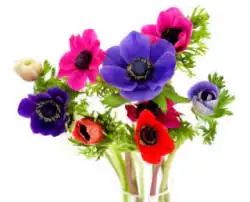
The 'De Caen' group of Anemones
Growing Crocosmia - Montbretia Bulbs - Cormous perennials

Crocosmia 'Severn Sunrise' - Crocosmia 'Solfaterre'
